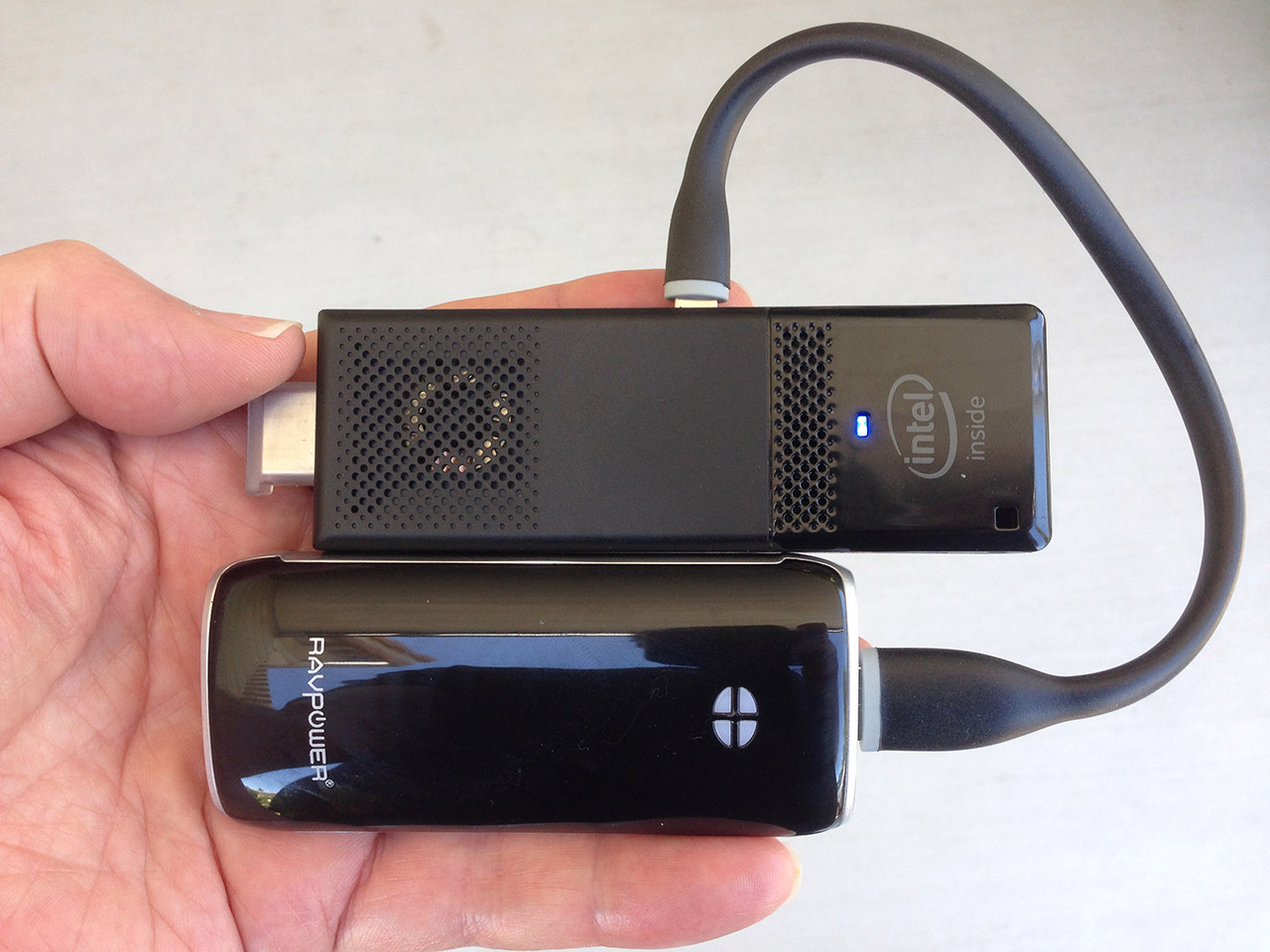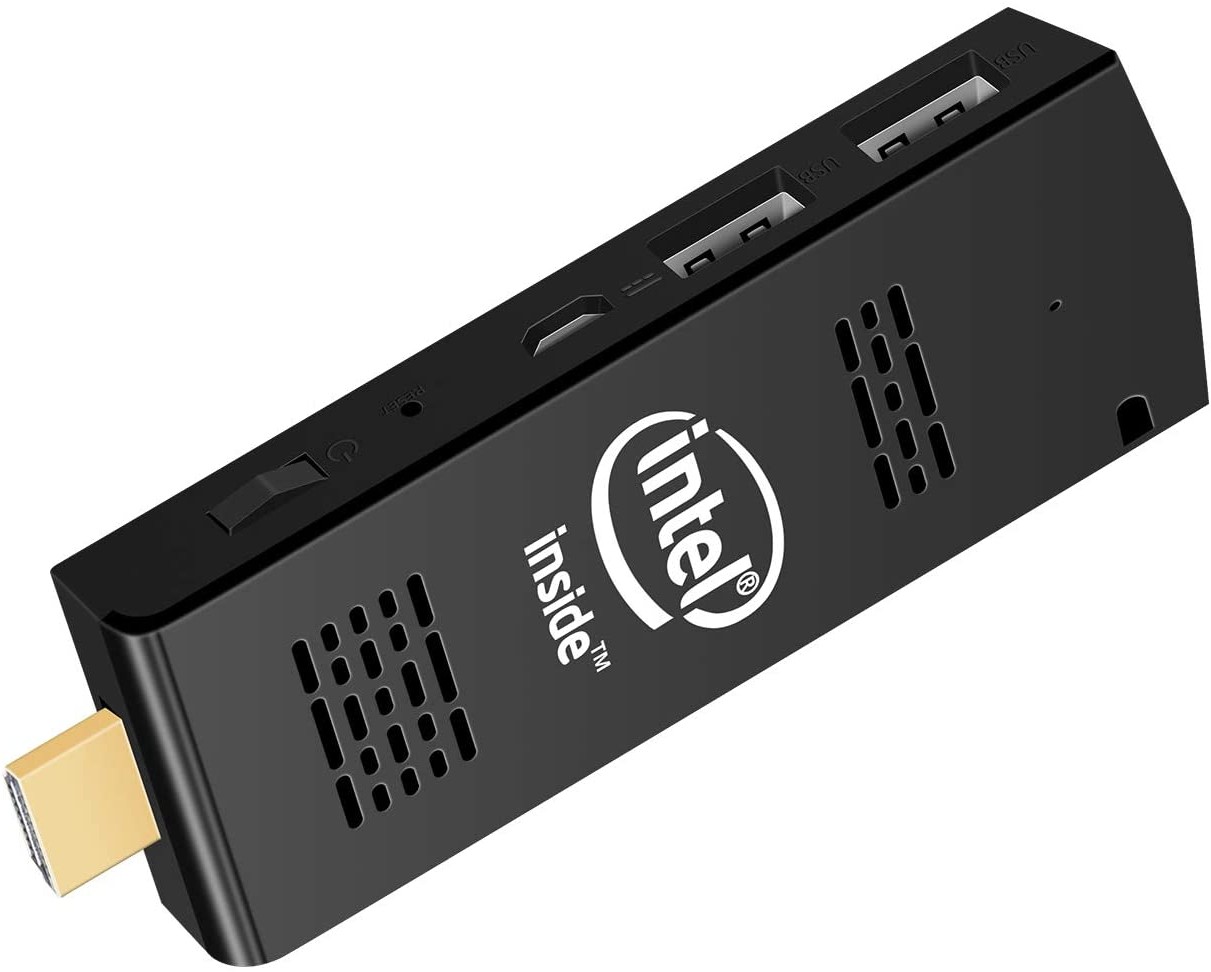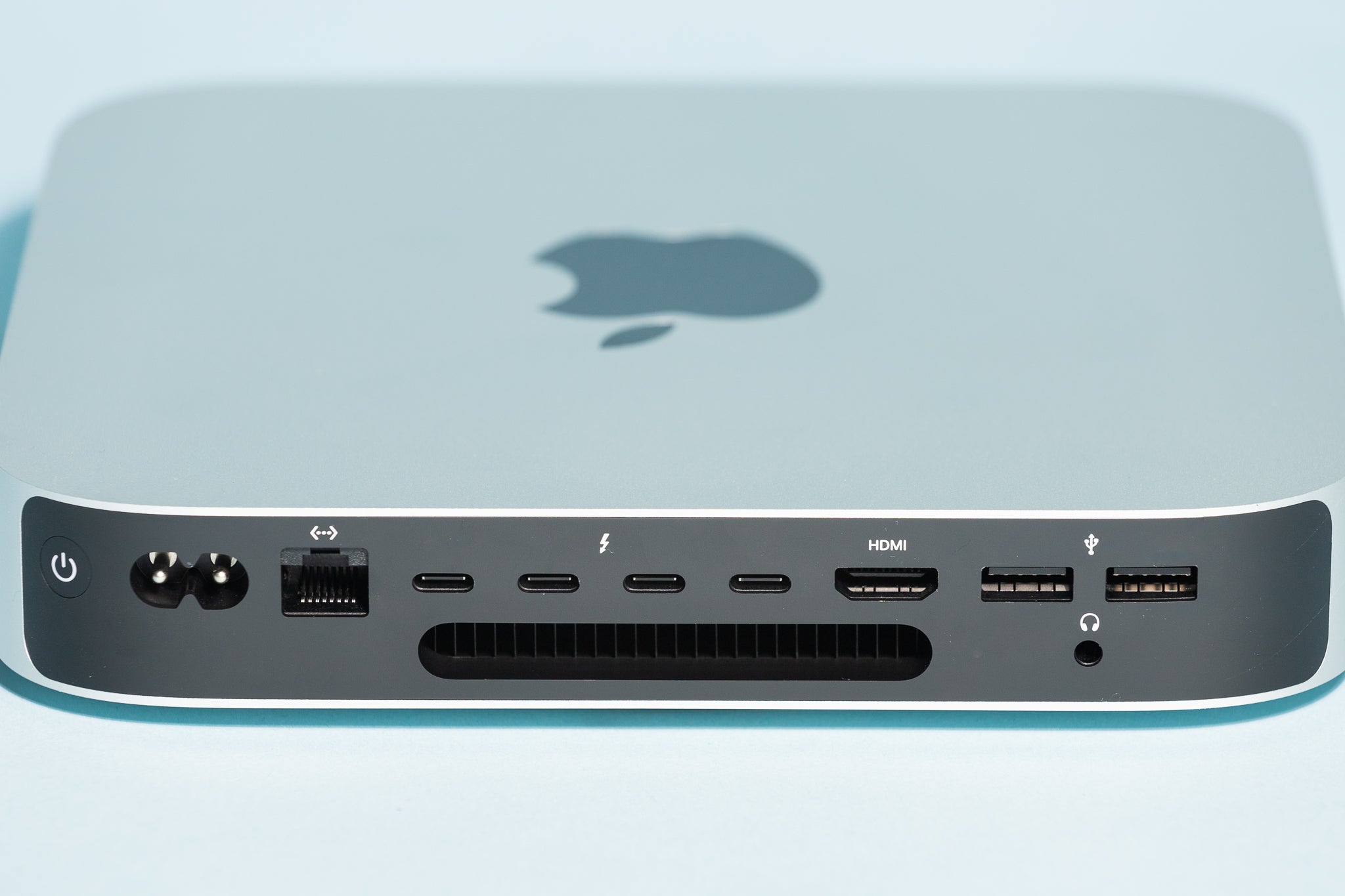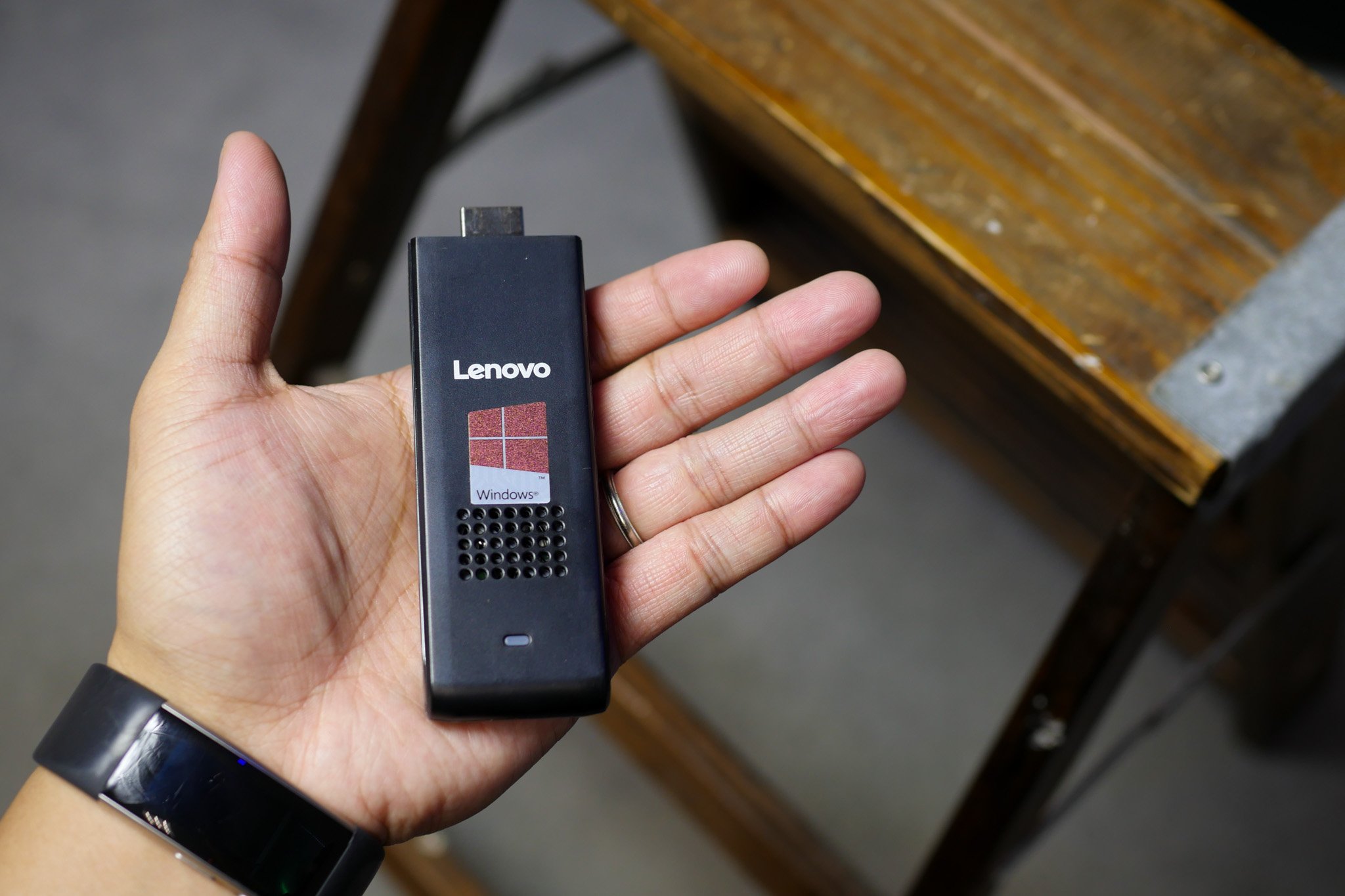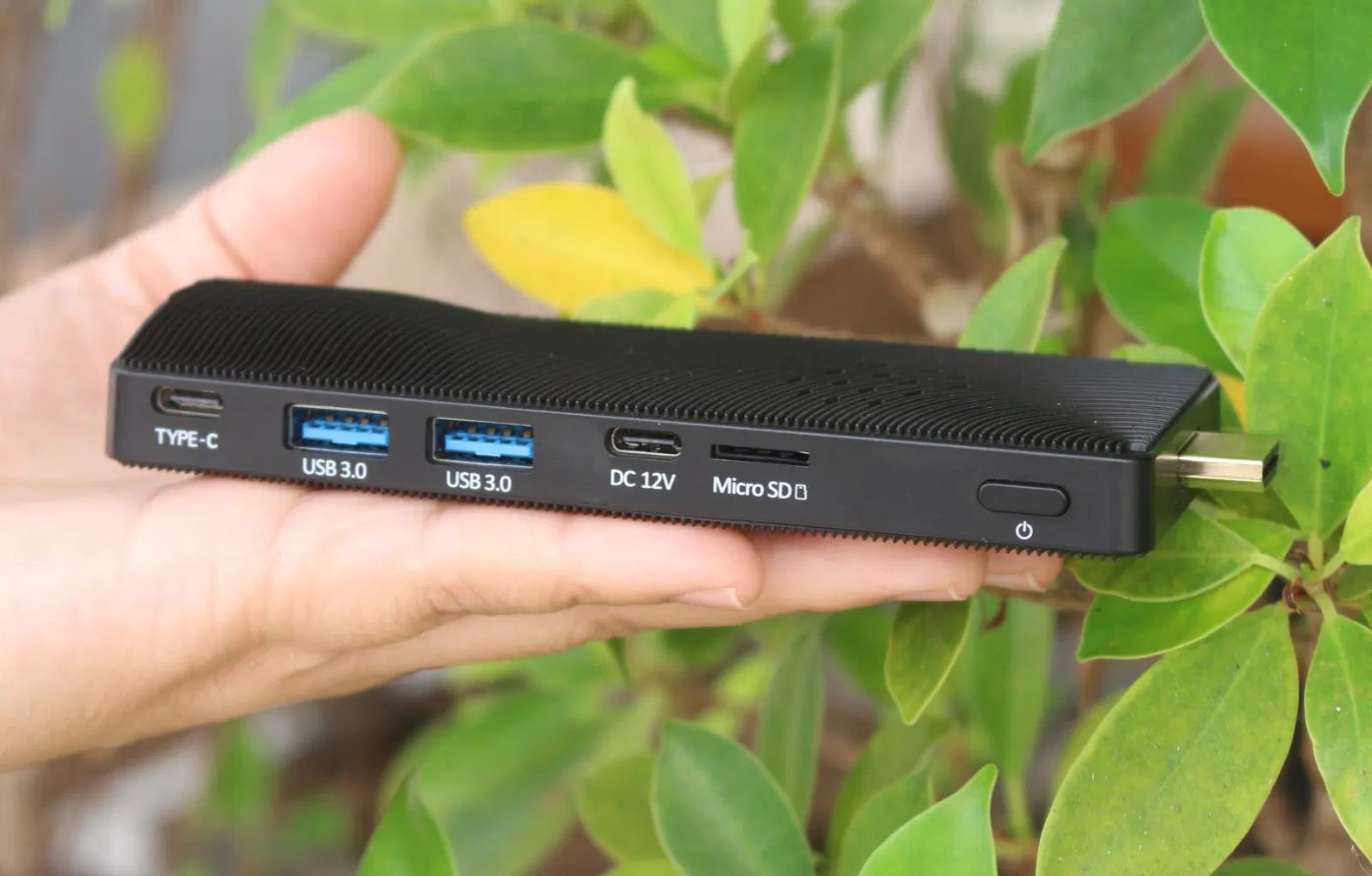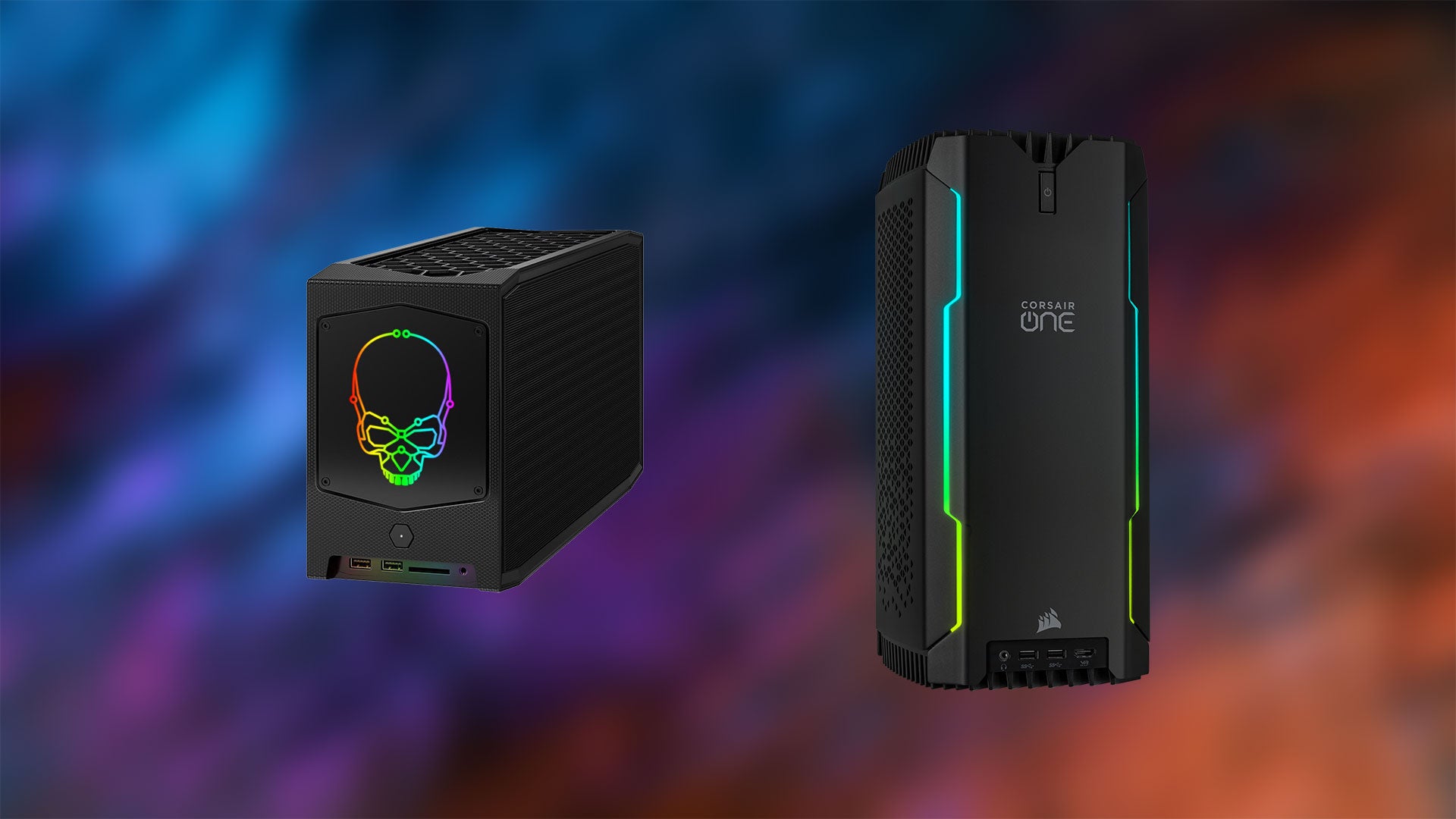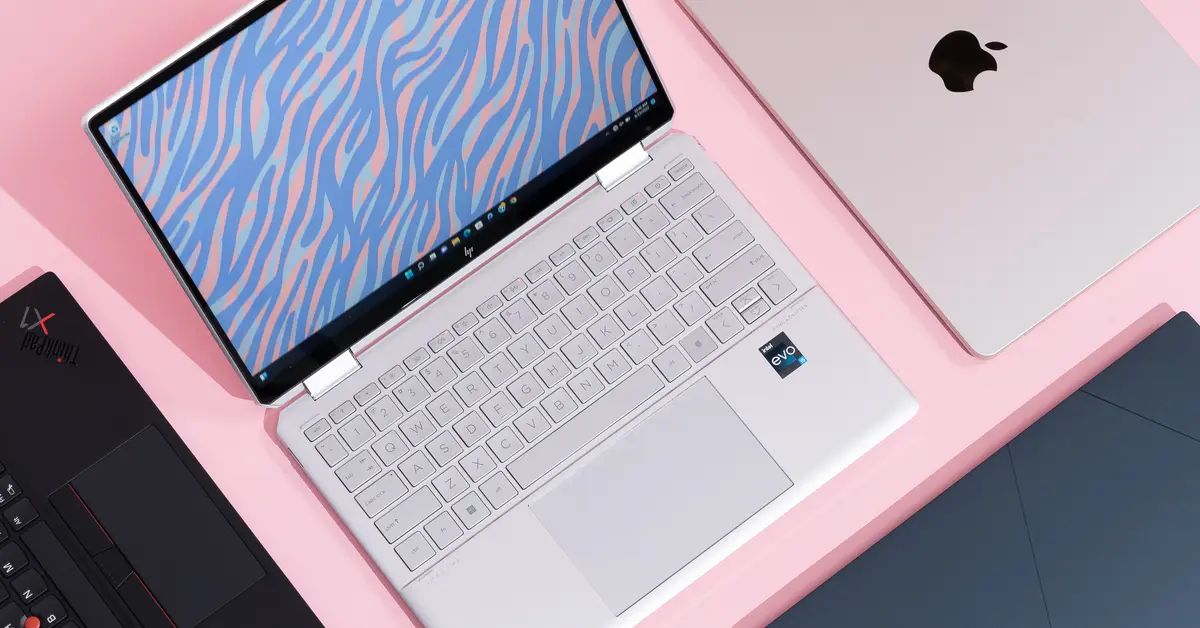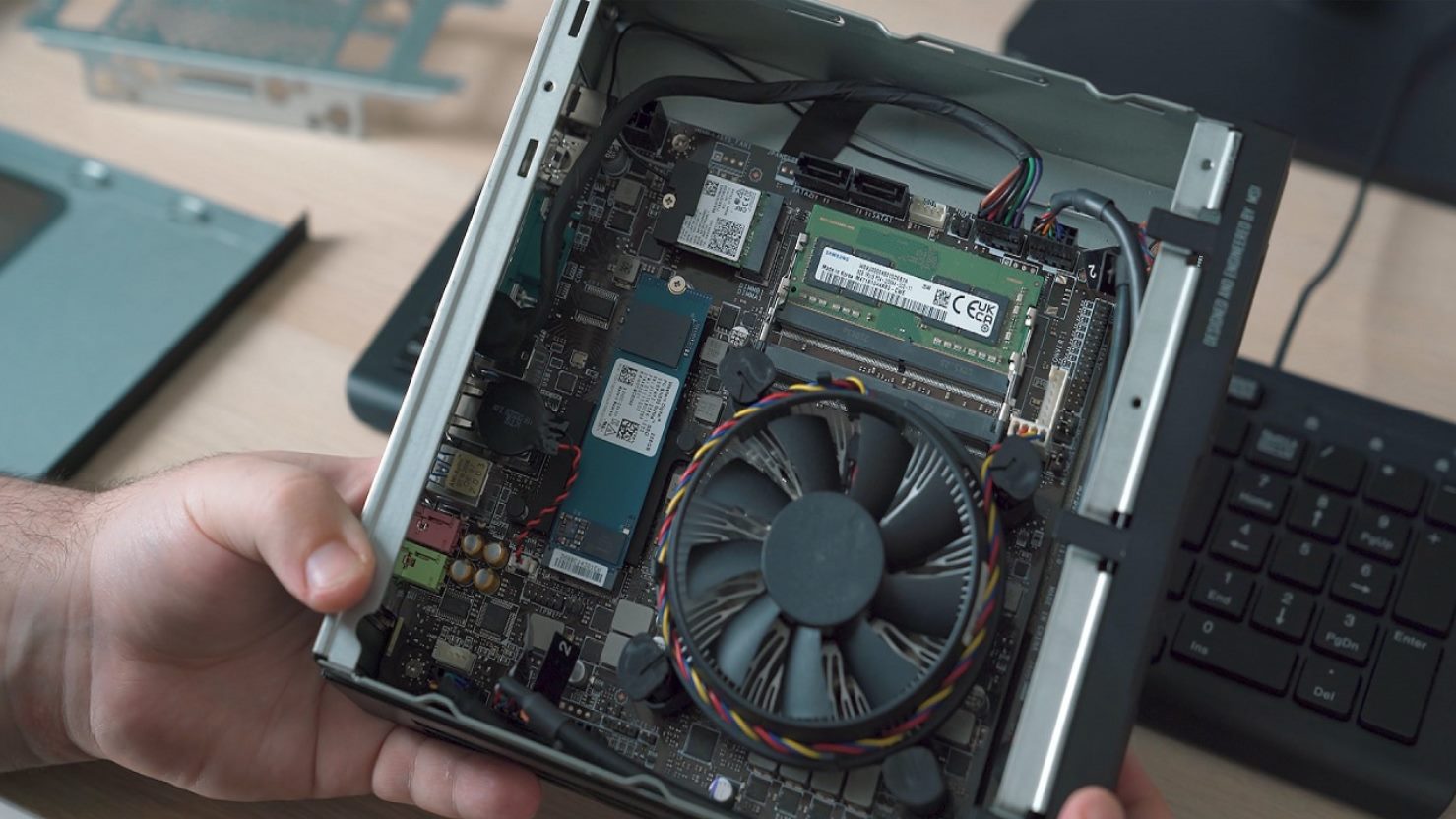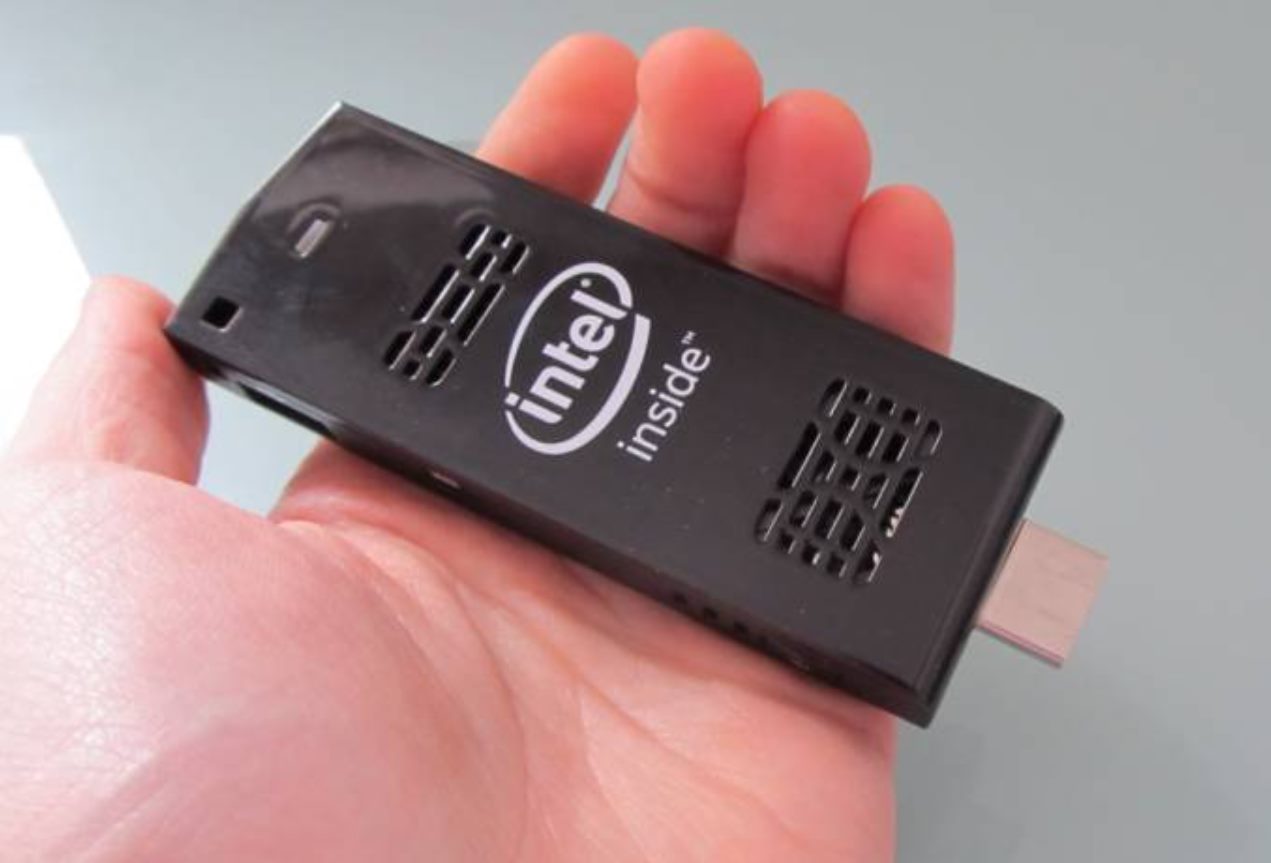What is a Mini PC on a Stick?
A mini PC on a stick, also known as a stick PC or compute stick, is a compact and portable device that functions as a fully operational computer. This innovative device is designed to plug directly into the HDMI port of a television or monitor, transforming it into a fully functional computer system. It offers a convenient way to access your digital world, providing all the features and capabilities of a traditional desktop or laptop computer in a small form factor.
At first glance, a mini PC on a stick resembles a USB flash drive, but it is much more than just a storage device. It houses a powerful processor, RAM, storage, and even an operating system. This pocket-sized powerhouse allows you to accomplish tasks such as web browsing, email, document editing, media playback, and even light gaming.
The beauty of a mini PC on a stick lies in its portability and versatility. It is perfect for individuals or professionals who are frequently on the move and need access to a computer. Whether you are a digital nomad, a student, or simply someone who wants the flexibility of having a computer in various locations, a mini PC on a stick offers an ideal solution.
Furthermore, a mini PC on a stick is a cost-effective option compared to traditional desktop computers or laptops. It eliminates the need for additional components such as a tower or monitor, saving both space and money. It also consumes minimal power, making it an energy-efficient alternative.
Overall, a mini PC on a stick is a compact, portable, and affordable computing solution that allows you to carry your digital world in your pocket. With its plug-and-play functionality, it brings the convenience of a full-fledged computer wherever you go.
Components of a Mini PC on a Stick
A mini PC on a stick may be compact in size, but it contains all the essential components that make it a fully functional computer. Understanding the key components will give you a better idea of its capabilities and performance. Let’s explore the main components of a mini PC on a stick:
- Processor: The processor, also known as the Central Processing Unit (CPU), is the brain of the computer. It executes instructions, performs calculations, and manages data. Mini PCs on a stick typically feature energy-efficient processors, such as Intel Atom or Intel Core M series, that provide sufficient power for everyday computing tasks.
- RAM: Random Access Memory (RAM) is temporary storage that the computer uses for active tasks. The more RAM a mini PC on a stick has, the better it can handle multitasking and run resource-intensive applications smoothly. Most mini PCs on a stick offer 2GB or 4GB of RAM, which is sufficient for general computing needs.
- Storage: Mini PCs on a stick come with built-in storage options that allow you to store your files, applications, and operating system. The storage capacity can vary, typically ranging from 32GB to 128GB or more. Some models also have the option to expand the storage through a microSD card slot or USB ports.
- Operating System: A mini PC on a stick comes preloaded with an operating system (OS) that serves as the software platform for running applications and managing the device. The most common operating systems on mini PCs on a stick are Windows, Linux, and Android. The choice of OS depends on your preferences and intended usage.
- Connectivity: Mini PCs on a stick offer various connectivity options to ensure seamless integration with other devices. They typically include Wi-Fi and Bluetooth for wireless connectivity and USB ports for connecting peripherals such as keyboards, mice, and external storage devices. Some models also have Ethernet ports for a wired internet connection.
- Graphics: The graphics component of a mini PC on a stick handles the display output and ensures smooth visual rendering. It may feature integrated graphics or rely on the processing power of the CPU. While not designed for demanding gaming or graphics-intensive tasks, mini PCs on a stick can handle basic multimedia playback and casual gaming.
These are the primary components that make up a mini PC on a stick. Each component plays a crucial role in its overall performance and functionality. Understanding how these components work together will help you make an informed decision when choosing a mini PC on a stick that suits your computing needs.
Operating System Options
A mini PC on a stick offers a range of operating system options, allowing you to choose the one that best aligns with your needs and preferences. The operating system (OS) serves as the software platform that enables you to run applications, manage files, and interact with the device. Here are some of the popular operating system options available for mini PCs on a stick:
- Windows: Many mini PCs on a stick come preloaded with Windows 10, the latest version of Microsoft’s widely used operating system. Windows offers a familiar interface and compatibility with a wide range of software applications. It provides a desktop-like experience and allows you to use popular productivity tools, browse the web, and enjoy multimedia content.
- Linux: For those who prefer open-source software and customization options, Linux-based operating systems such as Ubuntu, Fedora, or Debian are popular choices. Linux offers a robust and secure platform, ideal for developers, enthusiasts, and those who want more control over their computing environment. It provides access to a vast library of free and open-source software.
- Android: Mini PCs on a stick that run on the Android operating system offer a user-friendly interface and seamless integration with Google services. Android is primarily designed for touchscreen devices, but it can be adapted for use with a keyboard and mouse. It provides access to a vast ecosystem of apps through the Google Play Store, making it suitable for entertainment, web browsing, and light productivity tasks.
- Other Options: Some mini PCs on a stick offer specialized operating systems or variants tailored for specific purposes. For example, there are models that run Chrome OS, which is optimized for web-centric tasks and relies heavily on cloud-based services. There are also media center-specific operating systems, such as Kodi or Plex, that transform your mini PC on a stick into a dedicated media streaming device.
The choice of operating system depends on your requirements and preferences. Windows provides a comprehensive desktop environment, Linux offers customization and flexibility, Android is user-friendly with access to a wide range of apps, and specialized operating systems cater to specific needs. Consider your intended use and desired software compatibility when selecting the operating system for your mini PC on a stick.
Connecting a Mini PC on a Stick
Connecting a mini PC on a stick to your display or other devices is straightforward and hassle-free. These devices are designed for plug-and-play functionality, making the setup process quick and easy. Here are the steps to connect a mini PC on a stick:
- Check the requirements: Before connecting the mini PC on a stick, ensure that your display device (television or monitor) has an available HDMI port. Additionally, make sure you have a stable power source nearby to power the mini PC on a stick.
- Insert the mini PC on a stick: Locate the HDMI port on your display device and gently insert the mini PC on a stick into the HDMI port. Some models may have a separate HDMI extension cable for flexibility in positioning the device.
- Power the mini PC on a stick: Depending on the model, your mini PC on a stick may be powered through the HDMI port or require a separate power source. If it is powered through the HDMI port, simply plug the HDMI cable into the port. If it requires a separate power source, connect the provided power adapter to an electrical outlet.
- Switch the display input: Using your display device’s remote or menu options, switch the input source to the HDMI port where you connected the mini PC on a stick. It may be labeled as HDMI 1, HDMI 2, or a similar designation.
- Set up the mini PC on a stick: Once the display input is switched to the correct HDMI port, you will see the boot screen and setup process initiation on your display. Follow the on-screen instructions to complete the initial setup, including language selection, network connection, and account login (if required).
- Connect peripherals: If you need to connect peripherals, such as a keyboard, mouse, or external storage device, you can do so using the available USB ports on the mini PC on a stick. Additionally, you can connect wirelessly via Bluetooth or Wi-Fi for added convenience.
Once you have completed these steps, your mini PC on a stick is ready to use. You can now enjoy all the features and capabilities of a computer on your display device. It’s important to note that the specific steps and setup process may vary slightly depending on the model and operating system of your mini PC on a stick. Consult the user manual or manufacturer’s instructions for detailed information.
Using a Mini PC on a Stick as a Media Center
A mini PC on a stick can be an excellent choice for transforming your television or monitor into a versatile media center. With the right hardware and software, you can enjoy a range of entertainment options, including streaming movies and TV shows, playing games, and accessing your media library. Here’s how you can use a mini PC on a stick as a media center:
- Install media center software: Start by installing a media center software of your choice on your mini PC on a stick. Popular options include Kodi, Plex, and Emby. These software platforms provide a user-friendly interface for organizing and accessing your media files.
- Import and organize your media: Once you have installed the media center software, import your media files, including movies, TV shows, music, and photos. The software will automatically categorize and organize your media library, allowing you to easily browse and access your content.
- Stream online content: Many media center software options allow you to stream content from various online sources. You can install add-ons or plugins that provide access to popular streaming services like Netflix, Hulu, and YouTube. This allows you to enjoy a wide range of movies, TV shows, and videos directly from your mini PC on a stick.
- Set up live TV: If you want to watch live TV on your mini PC on a stick, you can connect an external TV tuner that allows you to access over-the-air channels. Some media center software also supports integration with IPTV services, giving you access to live TV channels via the internet.
- Control your media center: You can control your mini PC on a stick media center using a dedicated media center remote or a smartphone app. These tools provide a convenient way to navigate through your media library, adjust playback settings, and control other aspects of the media center software.
- Expand your media options: Aside from streaming and local media playback, a mini PC on a stick can also serve as a gaming device. You can install lightweight games and emulators to enjoy retro gaming experiences on your television or monitor.
Using a mini PC on a stick as a media center offers a versatile and customizable entertainment experience. It allows you to access your favorite content from various sources, organize your media library, and enjoy a wide range of entertainment options right on your television or monitor.
Performance and Specifications to Consider
When choosing a mini PC on a stick, it’s important to consider its performance and specifications to ensure that it meets your computing needs. Here are some key factors to consider:
- Processor and RAM: The processor and RAM play a vital role in the performance of a mini PC on a stick. Look for a device with a capable processor, such as an Intel Atom or Intel Core M series, and sufficient RAM (at least 2GB) to ensure smooth multitasking and responsiveness.
- Storage: Consider the storage capacity of the mini PC on a stick. Determine whether the built-in storage is adequate for your needs or if you require expandability options like a microSD card slot or USB ports to connect external storage devices.
- Operating System: Choose an operating system that aligns with your preferences and intended use. Windows offers compatibility with a wide range of applications, Linux provides customization options, Android offers a user-friendly interface, and specialized operating systems cater to specific needs.
- Connectivity: Ensure that the mini PC on a stick has the necessary connectivity options. Look for Wi-Fi and Bluetooth capabilities for wireless connectivity, as well as USB ports and an Ethernet port for wired connections if needed.
- Graphics: Consider the graphics capabilities of the mini PC on a stick if you plan to use it for media playback or light gaming activities. While not designed for high-end gaming, a device with decent integrated graphics will ensure smooth visuals and enjoyable multimedia experiences.
- Power Consumption: Take into account the power consumption of the mini PC on a stick. Look for devices that are energy-efficient and have low power consumption to reduce your environmental footprint and lower electricity costs.
- Reviews and Recommendations: Before making a purchase, read reviews and seek recommendations from trusted sources or other users. This will give you insights into the performance, reliability, and overall user experience of the mini PC on a stick you are considering.
Considering these performance and specification factors will help you choose a mini PC on a stick that suits your specific computing needs. Whether you need a device for basic web browsing and productivity tasks or for media playback and light gaming, paying attention to these aspects will ensure you make an informed decision.
Benefits of a Mini PC on a Stick
A mini PC on a stick offers a multitude of benefits that make it an attractive choice for those seeking compact computing solutions. Here are some key advantages of using a mini PC on a stick:
- Portability: The small and lightweight design of a mini PC on a stick makes it highly portable. It can easily fit into your pocket or bag, allowing you to carry your personal computer with you wherever you go.
- Space-saving: A mini PC on a stick eliminates the need for a bulky desktop tower, saving valuable desk space. This is especially beneficial for those with limited workspace or who prefer a clutter-free environment.
- Cost-effective: Mini PCs on a stick are often more affordable compared to traditional desktop computers or laptops. They provide a cost-effective computing solution without compromising on essential features and functionality.
- Energy-efficient: Mini PCs on a stick consume minimal power, resulting in energy savings and a lower impact on the environment. You can enjoy the benefits of a computer without wasting excessive amounts of electricity.
- Easy setup: Setting up a mini PC on a stick is simple and hassle-free. Just plug it into an HDMI port on your display device, connect the power supply (if required), and you’re ready to start using your computer without the need for complicated installation processes.
- Versatility: Despite their small size, mini PCs on a stick offer a wide range of capabilities. You can use them for web browsing, email, document editing, multimedia playback, light gaming, and even as a media center to stream movies and TV shows.
- Connectivity options: Mini PCs on a stick provide various connectivity options, including Wi-Fi, Bluetooth, and USB ports. This allows you to connect peripherals such as keyboards, mice, and external storage devices, expanding the functionality and versatility of your mini PC on a stick.
- Flexibility: With different operating system options available, mini PCs on a stick offer flexibility to choose the software platform that best suits your needs and preferences. Whether it’s Windows, Linux, Android, or a specialized operating system, you have the freedom to customize your computing experience.
These benefits make a mini PC on a stick a compelling choice for individuals who value portability, space-saving, affordability, efficiency, and versatility in their computing devices. Whether you’re a digital nomad, a student, or simply in need of a compact yet capable computer, a mini PC on a stick can provide the convenience and functionality you desire.
Limitations of a Mini PC on a Stick
While mini PCs on a stick offer numerous advantages, it’s also important to be aware of their limitations. Here are some key considerations regarding the limitations of a mini PC on a stick:
- Processing power: Due to their small form factor, mini PCs on a stick often have lower processing power compared to traditional desktop computers or laptops. They may not be suitable for demanding tasks such as heavy multitasking, resource-intensive applications, or high-end gaming.
- Storage capacity: Mini PCs on a stick typically have limited built-in storage capacity. While some models offer expandable storage options through microSD card slots or USB ports, it may still be insufficient for users with large media libraries or those who require extensive file storage.
- Limited connectivity: The compact size of a mini PC on a stick means that there may be limited connectivity options compared to traditional desktop computers. They usually provide a limited number of USB ports, and some models may lack an Ethernet port for wired internet connectivity.
- Graphics capabilities: While mini PCs on a stick can handle basic multimedia playback and light gaming, they are not designed for high-end gaming or graphics-intensive tasks. The integrated graphics on these devices may not be suitable for demanding video editing or 3D rendering applications.
- Heat dissipation: Due to their small form factor, mini PCs on a stick have limited cooling capabilities. Extended periods of heavy use may result in increased heat, which can impact performance and potentially lead to thermal throttling. It’s important to ensure proper ventilation and monitor temperatures during intensive usage.
- Limited upgradability: Mini PCs on a stick are generally not designed for extensive hardware upgrades. While some models may offer options for expanding storage or connecting peripherals through USB ports, overall upgradability options are limited compared to traditional desktop computers.
- Software compatibility: It’s essential to consider software compatibility when using a mini PC on a stick. Some specialized software or specific applications may not be optimized or available for certain operating systems or hardware configurations. It’s important to research and ensure that the software you need is compatible with your mini PC on a stick.
Despite these limitations, mini PCs on a stick still provide a convenient and portable computing solution for many users. Understanding their limitations allows you to make an informed decision and choose the right device that meets your specific needs and expectations.
Popular Mini PC on a Stick Options
Several manufacturers offer a variety of mini PCs on a stick, each with its own features, specifications, and capabilities. Here are some popular options to consider when looking for a mini PC on a stick:
- Intel Compute Stick: The Intel Compute Stick is one of the most well-known and widely used mini PCs on a stick. It offers a range of models with different processor options, storage capacities, and operating systems. The Intel Compute Stick provides a reliable and versatile computing experience.
- ASUS VivoStick PC: The ASUS VivoStick PC is another popular option known for its sleek design and performance. It comes with various processor options, integrated graphics, and storage capacities. The ASUS VivoStick PC offers a good balance between affordability and functionality.
- Lenovo Ideacentre Stick 300: The Lenovo Ideacentre Stick 300 is a compact and affordable mini PC on a stick option. It features an Intel Atom processor, integrated graphics, and offers a range of connectivity options. The Lenovo Ideacentre Stick 300 is a budget-friendly choice suitable for basic computing tasks.
- ACEPC AK1 Stick: The ACEPC AK1 Stick is a versatile mini PC on a stick that offers Intel Core M series processors and upgradable RAM. It provides better performance and handles more demanding tasks compared to devices with Atom processors. The ACEPC AK1 Stick is ideal for users who require more processing power.
- Minisforum N40 Mini PC: The Minisforum N40 Mini PC is a fanless and energy-efficient option that features an Intel Gemini Lake Celeron N4000 processor. It offers various RAM and storage options and provides good performance for everyday computing tasks and multimedia playback.
These are just a few examples of popular mini PC on a stick options available in the market. It’s important to research and compare the features, specifications, and user reviews of different models to find one that best suits your specific requirements and budget.
Frequently Asked Questions (FAQs) about Mini PC on a Stick
Here are some frequently asked questions and answers about mini PCs on a stick:
- Can I use a mini PC on a stick as my primary computer?
- Do mini PCs on a stick require an internet connection?
- Can I upgrade the components of a mini PC on a stick?
- What peripherals can I connect to a mini PC on a stick?
- Can I use a mini PC on a stick with a monitor instead of a television?
- Are mini PCs on a stick compatible with all operating systems?
- Can I use a mini PC on a stick for gaming?
- How do I update the software on a mini PC on a stick?
Yes, you can use a mini PC on a stick as your primary computer for basic computing tasks such as web browsing, email, document editing, and multimedia playback. However, it may not be suitable for resource-intensive tasks or heavy multitasking.
While an internet connection is not always required, it is recommended for accessing online content, software updates, and other online services. Most mini PCs on a stick have built-in Wi-Fi, allowing you to connect to the internet wirelessly.
Most mini PCs on a stick have limited upgradability. While some models may offer storage expansion options through microSD card slots or USB ports, overall hardware upgrades are usually not possible due to the compact design of these devices.
You can connect various peripherals to a mini PC on a stick, including keyboards, mice, game controllers, webcams, and external storage devices via the available USB ports. Some models also support wireless connectivity via Bluetooth for connecting compatible peripherals.
Yes, you can use a mini PC on a stick with a monitor that has an HDMI input. Simply plug the mini PC on a stick into the HDMI port of the monitor and follow the same setup process as you would with a television.
No, mini PCs on a stick are typically designed to run specific operating systems. The most common options are Windows, Linux, and Android. It’s essential to choose a mini PC on a stick that supports the operating system you prefer.
While mini PCs on a stick are not designed for high-end gaming, they can handle light gaming and retro gaming experiences. You can install lightweight games and emulators to enjoy casual gaming on your television or monitor.
Updating the software on a mini PC on a stick is typically done through the operating system’s built-in update mechanism. You can check for updates in the settings menu, and if updates are available, follow the instructions to download and install them.
These are just a few frequently asked questions about mini PCs on a stick. If you have more specific questions or concerns, it’s always recommended to consult the user manual or reach out to the manufacturer for support and guidance.







